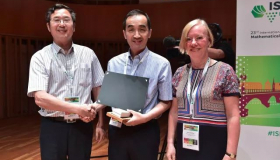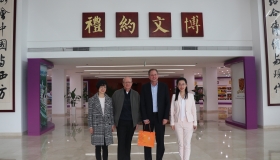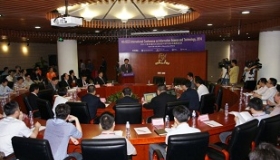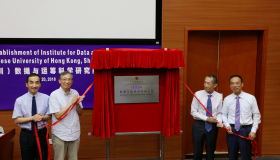Lecture| Soybean Homecoming - A Journey from Laboratory to Field
On Thursday, May 11, 2017, the speech of “Soybean Homecoming - A Journey From Laboratory to Field” were delivered by Prof. Hon-Ming Lam from the School of Life Science of CUHK at Governing Board Meeting Room, Dao Yuan Building.
Professor Lam is an expert in the studies of gene function. His research provides important information to soybean research and breeding programs. He and his team had also successfully identified the salt-tolerance gene, making significant contributions to the agriculture worldwide.

From northern provinces to southern provinces, Professor Lin traveled all over the country to investigate the soil condition, and was deeply impressed by the aridity and salinization of the soil, therefore, he tried very hard to improve this situation. Soybean is not only a nutritious crop, but also a good helper to fertilize the poor soil by nitrogen fixation when they are growing. To better improve the soil quality, Professor Lin started his research on soybean planting and soybean seeds optimization. During his research, Professor Lin found that one kind of wild soybeans along the Yellow River can survive under extreme dry condition. After many experiments, the researchers proved that, compared with farmed soybean, the root of wild soybean performed indeed better against the drought and salinization. Professor Lin sent the cross-breeding soybean seeds back to his hometown, Gansu Province, bringing hope to many local desperate farmers. Afterwards, the cultivated soybean had been sent to the Africa, helping more people.




